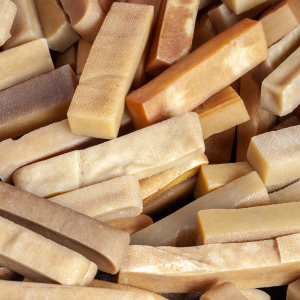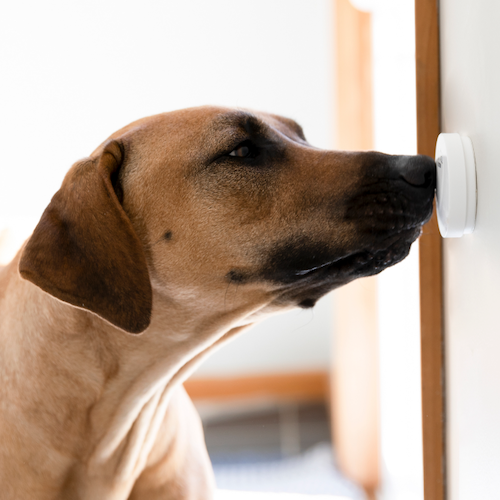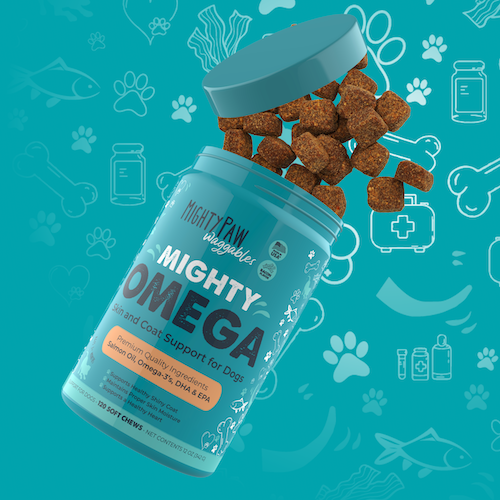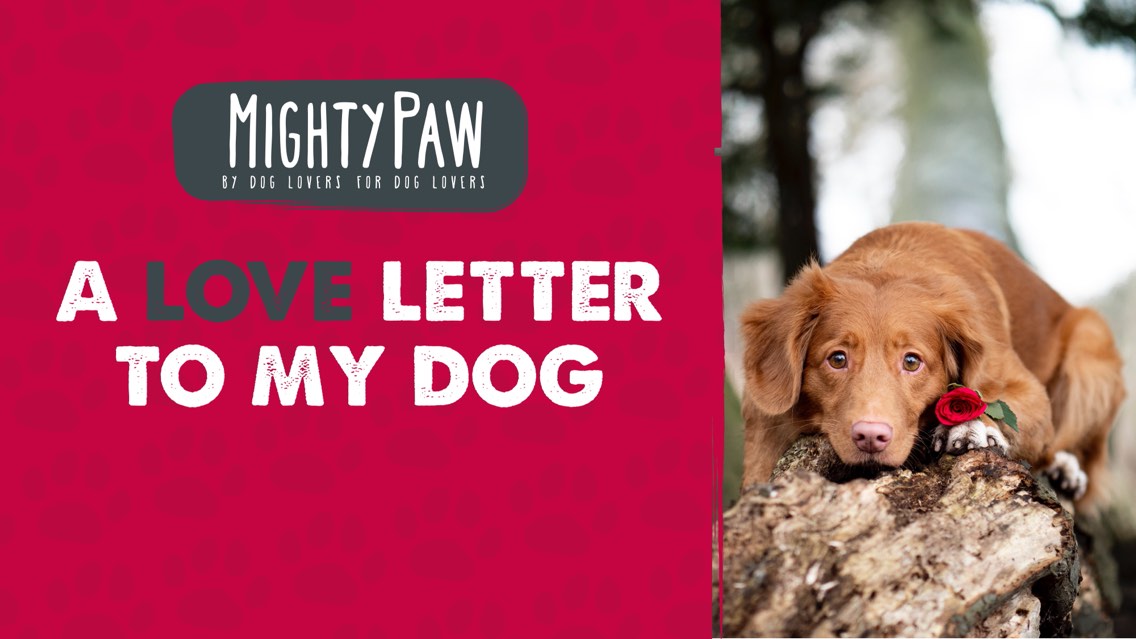Hi Mighty Paw fam, it's Barbara again on our weekly blog post, and today I'd like to share a few cold weather tips for dogs with you.
Some are no-brainers while others aren't as intuitive yet truly dangerous when overlooked.
Are you ready? Let's dive right in!
Cold Weather Tips For Dogs

Limit Your Dog's Time Outside
My first tip is to limit your dog's time outside to about 15 minutes at a time when it's below freezing (32 F/0 C).
Obviously your pooch will still have to go potty, so this is a good, and potentially the only, opportunity to spend time outdoors together.
If there's a lot of snow build up where your pup usually gets busy, I recommend clearing that area of the snow, ideally until you see the grass, sand, gravel or whatever else he usually does his business on.
Some dogs are really stubborn and will only eliminate on the surface they're used to, so be prepared for that!
Keep Your Dog Leashed
Here's tip #2: When you are venturing out for a little walk in the cold/snow, it's best to keep your pup leashed unless you're supervising him in a fenced-in area.
The reason for this is that should your dog take off, it can be harder for him to find his way back home since snow covers a lot of the usual smells.
Also, if he were to venture out onto a body of frozen water that's covered in ice and snow, he could very well break through the ice and into the water, so be aware of that danger!
Check out our waterproof dog collars for $15.99 - they're perfect for snow :)
If you want your pup to stretch his legs and let him run around a bit in an open area, I suggest you take a peek at our 30 ft dog leash for $14.99!
Alternatively, you could try our 30 ft tie out cable leash for $13.99. But please don't leave your dog unsupervised outside in the cold!
Wipe/Wash Your Dog's Paws After Walks
Moving on to tip #3: If you visit or live in an area with a lot of snow and ice, chances are that people put down salt and other chemicals to melt the ice, and your pup will inevitably get in contact with it when he walks on it. That's unless he wears dog shoes or boots.
If he doesn't, make sure to wipe or wash his paws when he comes back inside. That's because licking it off can cause gastrointestinal irritations with diarrhea and vomiting. It can even cause chemical burns on his paws.
These chemicals also have the potential to contribute to cracked and irritated paw pads. So in addition to cleaning them, consider applying some paw pad salve or coconut oil. Both will smooth the paw pads and act as a barrier between the pads and any chemicals.
When you apply paw pad salve or coconut oil to your pup's paws, supervise your dog until's it dry so he doesn't lick it off and ingest it. While coconut oil is fine to be ingested, many paw pad salves are not. Plus licking it off defeats the purpose!
Provide Plenty Of Clean Drinking Water Inside & Outside
Here comes tip #4: We all know that it's important to provide clean drinking water for our dogs, but that's particularly true during the colder months.
That's because the winter air is a lot dryer than during spring, summer, and autumn. Dogs also use quite a bit of energy to stay warm, which needs to be replenished with water.
So whether your pup's inside or outside during the cold, make sure that he has plenty of fresh water available.
Here's a fun fact for you: Raw-fed dogs drink less water than dogs who eat dry or canned dog food because it's naturally more hydrating. But even my pup Wally who's raw-fed drinks more water in the winter time than he does during the rest of the year.
Groom Your Dog Regularly, But Don't Shave Him Down
Tip #5 builds on the importance of regular grooming sessions BUT without the shaving, please!
During the colder months, continue to brush and/or de-shed your pup, especially if they have longer fur and/or a thicker coat that mats quickly like our warehouse pup Baloo! He's a Pyreneese mix and enjoys his regular brushing sessions.
However, please don't shave your dog's thick coat during the colder months because it provides insulation against the cold.
The video below features Baloo and our grooming brush and our grooming rake:
If there's a specific reason that requires shaving - for example, a heavy flea infestation - it's a good idea to have your pup wear a jacket or sweater when they're outside.
Know Your Dog's Limits
Tip #6 underlines the importance of knowing your dogs and their limits when it comes to planning activities with them during cold weather.
After all, all dogs are different, and while some pups shiver in the cold, others thrive in colder weather because of their thick undercoats!
That said, dogs with short, thin coats like Bulldogs or Boxers won't be able to stay outside nearly as long as their friends with thick undercoats.
Pups like the following are made for colder weather:
- Huskies
- Akitas
- Bernese Mountain Dogs
- German Shepherds
- Shiba Inus
- Newfoundlands
- Great Pyreneese Dogs
- Keeshonds
- Komondors
- Norwegian Elkhounds
- Samoyeds
- Canadian Eskimo Dogs
- Chinooks and others!
These pups make great walking, running, sledding or skijoring partners during cold weather.
However, that doesn't mean that they can stay outside all day long either! Even these thick-coated guys will need to spend a lot of time inside.
Don't Leave Your Dog Outside For Extended Periods Of Time
Last but not least, here's tip #7: Please don't leave your dog outside for extended periods of time, even when your pooch is seemingly made for colder weather and you provide shelter such as a dog house.
This type of structure DOES NOT keep your dog warm, nor does any bedding or hay or whatever else you were to put down inside of it.
If a dog is exposed to low temperatures for too long, he will develop hypothermia, which happens when the body temperature drops below 95 F/35 C. Hypothermia is ultimately deadly, so don't take any chances!
Likewise, don't leave your dog alone in a cold car unless it's just for a few minutes. The temperature in there can drop very quickly, just like in a dog house, and dogs are at risk to develop hypothermia.
Barbara Rivers writes regularly for Mighty Paw. She is a blogger, raw feeder, former dog walker and maintains the blog K9s Over Coffee.
If you enjoyed this blog post, sign up for more here!
You may also like:
Stuck Inside All Winter? Here's How To Entertain Your Dog Indoors!











